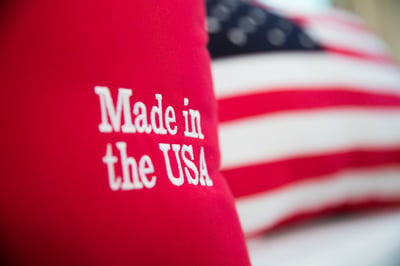For the past few decades, there has been an ongoing debate about the rise of automation in the industrial sector, and its potential impact on American manufacturing jobs. Many experts argue that as robots and AI become more advanced, they will inevitably replace many human workers on factory floors across the country. While the growing capabilities of automated systems do pose a legitimate disruption risk to some occupations, this view overlooks several important nuances regarding the true dynamics reshaping factory employment in the US. The relationship between automation and jobs is far more complex than simply machines displacing people on a large scale.
In this post, I want to provide a more balanced perspective on this issue by exploring some of the other critical factors that have also been transforming the manufacturing industry in recent years.
Key Takeaways✔️ Technological advancements in factory automation have improved productivity and efficiency but raised concerns about job displacement due to increased automation and the use of industrial robots. ✔️ The decline in US factory jobs is largely due to long-term trends like globalization, outsourcing, changing trade policies, and evolving consumer demands impacting manufacturing employment. ✔️ Policy interventions are crucial in mitigating job losses in the manufacturing sector, emphasizing re-skilling and education programs to help displaced workers adapt to a changing economy and job market. |
Jump to a Section
A Brief History of US Factory Jobs | The Declining US Factory Jobs | The Main Culprit: Globalization | Other Factors Impacting US Factory Jobs | Understanding Factory Automation | Policy Implications and Solutions | Resources | Frequently Asked Questions
A Brief History of US Factory Jobs
America's manufacturing story unfolds in the late 18th and early 19th centuries during the buzz of the Industrial Revolution. This pivotal era witnessed a boom in factory jobs, with automation stepping in for manual labor. The USA's economy thrived with industries like textiles, iron, and steel, creating millions of jobs and shaping our GDP. Cheers to the hardworking leaders behind this transformation.
Fast-forward to the mid-20th century, known as the Golden Age of Manufacturing. Post-World War II, factory jobs thrived, fueled by a soaring demand for consumer goods. It was a time of high wages, job security, and the dominance of labor unions—truly, a golden era for our diligent American workforce.
However, every story has its shadows. The late 1970s and early 1980s witnessed a decline in factory jobs. Due to many reasons we will discuss, factory jobs declined significantly.
However, it's important to remember our dedicated workers' significant progress and valuable contributions. We salute our past, present, and future factory workforce!
The Declining US Factory Jobs
The decline in the US factory job market has been a long-standing trend, not a recent phenomenon. So, let's take it back to the 1950s. Can you believe there were once about 16 million manufacturing jobs in the US? Fast forward to 2019, and that number dropped to around 12 million.
Despite the job decline, manufacturing output actually skyrocketed during the same period. How is that even possible? Well, many point to technology and automation as the heroes of that story. They swooped in, saving the day by boosting productivity and efficiency in the manufacturing sector. But hold your horses; automation isn't the main culprit here.
So, what's the truth? It's a complex mix of factors. Various economic and global trends influence the decline in jobs. The decline in US factory jobs is a multi-faceted phenomenon. It's been happening for decades, but it's not all doom and gloom. Technology and automation have their part to play, but we must also appreciate the hardworking individuals who keep the manufacturing sector thriving.
The Main Culprit: Globalization
 Globalization has greatly affected US factory jobs, causing a decline in manufacturing employment. The rise of global trade has led companies to outsource some of their production processes to countries with lower labor costs, resulting in job losses in the US.
Globalization has greatly affected US factory jobs, causing a decline in manufacturing employment. The rise of global trade has led companies to outsource some of their production processes to countries with lower labor costs, resulting in job losses in the US.
Globalization has had several effects on local manufacturers:
- It has made it easier to move production facilities to countries with lower labor costs.
- This has increased competition for local manufacturers.
- As automated processes become prevalent in these facilities, the need for human labor reduces further, contributing to job losses.
As companies outsource production overseas to cut costs, this has resulted in job losses and a decline in domestic manufacturing skills. According to a report by the Economic Policy Institute, between 2001 and 2017, the United States lost 3.7 million manufacturing jobs due to outsourcing, resulting in a decline in domestic manufacturing skills. This has had a ripple effect on other industries, such as research and development, design, and engineering, that depend on a strong manufacturing sector.

Other Factors Impacting US Factory Jobs
While automation and globalization significantly contribute to the decline in US factory jobs, other factors also play a role.
Trade Policies
Trade policies, especially those encouraging imports from China, have contributed to the drop in US manufacturing employment. NAFTA, for instance, led to the relocation of approximately 700,000 jobs to Mexico.
While trade liberalization efforts have reduced costs, improved productivity, and enhanced competitiveness, they have also led to job losses, firm closures, and wage declines in the industry. Furthermore, increased imports from China have displaced manufacturing jobs, contributing to a trade deficit.
Changing Consumer Demands
Customer expectations are rapidly changing, with a growing demand for the "Amazon" experience. This shift towards increased consumerism has compelled businesses to automate processes, cut costs, and explore overseas options. Manufacturers must adapt to these evolving behaviors and trends to meet the demands for faster delivery, quality, sustainability, and product customization.
These preferences drive manufacturers to adapt to global competition, offer personalized products, and meet changing consumer needs. Embracing sustainable practices can benefit factory jobs by realizing the financial and environmental advantages. As economies advance, consumers shift towards services over goods, reducing demand for traditional factory roles.
The Aging Manufacturing Workforce
Another factor contributing to the decline in US factory jobs is the aging manufacturing workforce. With baby boomers retiring at a rapid rate, the manufacturing sector is experiencing a significant labor shortage. Many younger individuals perceive manufacturing jobs as outdated and seek employment in more digital-oriented sectors. This generational shift in career preferences is exacerbating the decline in factory jobs.
Skills Gap
Simultaneously, the evolving nature of manufacturing work requires a workforce with a new set of skills. With the advent of Industry 4.0, workers need to be comfortable with digital tools and advanced machinery. The existing skills gap, where workers lack the necessary skills to perform these new roles, further contributes to the decline in manufacturing employment.
Economic Fluctuations
Economic fluctuations and recessions are another cause for the diminishing number of factory jobs. During periods of economic downturn, companies tend to downsize, often leading to job losses in the manufacturing sector. Additionally, during recessions, consumers usually cut back on spending, reducing the demand for manufactured goods.
Regulatory and Tax Policies
Finally, regulatory and tax policies can also impact manufacturing jobs. If regulations become too burdensome or the cost of compliance too high, companies might choose to move their operations overseas, leading to job losses. Similarly, if the corporate tax rate is significantly higher than in other countries, businesses might relocate their manufacturing units to countries with more favorable tax climates.
Understanding Factory Automation
What is factory automation? We're talking about the integration of technologies (such as robotic arms, motion control, etc.) that have significantly reshaped manufacturing processes with reduced human involvement. Factory automation systems are used within manufacturing systems of all industries, each with distinct objectives, from enhancing worker safety to improving manufacturing quality. To maintain robotic production systems, it is essential to employ human personnel to ensure the efficient functioning of these automation systems.
There’s no denying the economic attractiveness of factory automation. As robot prices decrease and computing power and networking technologies advance, manufacturers increasingly turn to automation to enhance productivity and reduce expenses. The result significantly boosts productivity and efficiency in modern digital-first factories.
Examples of machine automation technologies
Automation’s progress in the industry is striking. It has evolved from modest beginnings to its current state, where full manufacturing automation and automated production lines prevail in numerous manufacturing processes. One such example is the implementation of an automated production line, which has significantly improved efficiency and quality through continuous improvement. Manufacturing technologies, such as real-time adjustment coatings and aid process control, promise even more capabilities during production processes.
Implementing automation processes enhances efficiency and productivity, culminating in superior output quality and consistency, while also minimizing waste and costs. In this evolving landscape, human roles shift from hands-on production to overseeing, monitoring, and maintaining an automation solution, such as equipment.
Machine Automation: The Problem, or Bringer of New Opportunities?
Despite concerns about job loss due to factory automation, it's important to recognize that automation also creates new job opportunities and requires a different skill set. Roles like automation engineers, data analysts, and system operators are in high demand. This shift presents an exciting opportunity for younger generations to engage with cutting-edge technology and develop vital skills.
Educational institutions can bridge the skills gap by designing coursework and training programs aligned with the demands of automation. With the right approach, automation can drive economic growth and prosperity by creating jobs and fostering innovation. Embracing automation allows us to turn challenges into opportunities for growth.
Policy Implications and Solutions
Policymakers are key in tackling the hurdles faced by factory workers. There are significant industrial policies, worker empowerment initiatives, and enforced measures established by the U.S. Department of Labor to safeguard workers’ rights and aid them in navigating industrial transitions.
Investment in education and training programs is one potential solution. Displaced factory workers can access free online courses and certifications from various institutions, providing support and resources to facilitate workforce reentry and skill development.
Addressing job loss in the manufacturing sector requires a comprehensive approach that recognizes the value of a skilled, motivated workforce and employs systematic strategies to overcome workforce challenges.

The decline in US factory jobs is a complex issue influenced by various factors beyond automation. Globalization, trade policies, and evolving consumer demands have significantly impacted the manufacturing landscape. A comprehensive, forward-thinking approach that includes investment in education and worker support initiatives can help address this issue, ensuring a resilient workforce ready to face the future.
🤔 So, do you agree with me?
What's your take on the future of the US manufacturing market? Let me know your thoughts in the comments below.
Resources:
Frequently Asked QuestionsWhat is the meaning of an automated factory?
|







Leave Comment